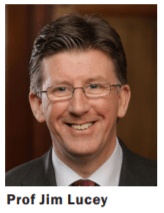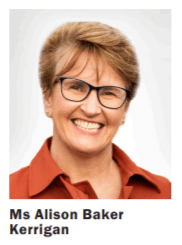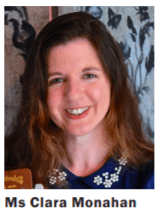There is substantial evidence on the health benefits of the arts. Bette Browne explores its role in Irish healthcare
The outpouring of sorrow in Ireland at the deaths in just one month of three giant cultural figures – Paddy Moloney, Máire Mhac an tSaoi, and Brendan Kennelly – highlighted the importance of the arts in people’s lives. In relation to health and wellbeing, it is a role that is also supported by hard evidence.
“There is a substantial body of evidence on the health benefits of the arts,” a World Health Organisation report stated in 2019. It stressed “the growing evidence base for the role of the arts in improving health and wellbeing” and said the benefits applied to both mental and physical health.
Ireland has seen a six-fold increase in the last 20 years in the level of arts experiences available to patients in hospitals and other healthcare settings. However, experts say its role can be expanded. Irish research has been carried out by the Arts and Health Co-ordinators Ireland (AHCI) group, which has been delivering arts experiences to health service users in Ireland for almost two decades.
Researcher Dr Francesca Farina (PhD) measured the level and nature of arts and health activity in 2019 across a range of healthcare contexts including hospitals, day care centres, community settings and health promotion. The report found that benefits ranged from stress reduction to improved health and wellbeing, the development of creativity and enhanced sense of community.
“The most prevalent type of arts experience was participatory and collaborative arts whereby health service users and staff collaborate with professional artists in making artworks in all art forms,” the report found. “This accounted for twothirds of programmes. Approximately one-third of programmes involved either performance or artists’ residencies, while one-quarter of programmes involved an exhibition or an educational element.”
Dublin had the highest number of programmes, representing 36 per cent of the total. Cork and Kildare were next, with 20 per cent and 14 per cent, respectively. Every county except Carlow was involved in at least one programme. Three-quarters of programmes involved counties in Leinster (76 per cent). Counties in Munster were the next highest percentage (43 per cent), followed by Connacht (28 per cent) and Ulster (8 per cent).
“The capacity to be productive and to make our talent manifest itself is about opportunity and about recovery and wellness,” Prof Jim Lucey, Clinical Professor of Psychiatry, Trinity College Dublin and Consultant Psychiatrist, St Patrick’s University Hospital, Dublin, told the Medical Independent (MI). “In the mental health services, we want to give people the ability to discover their talents and discover their art, because we know it’s such an important pillar.
“Patients may be artistic themselves or can be nourished by exposure to the arts. There are the people who are creatively talented, but I’m also thinking of patients who might be exposed to the arts and that might be very helpful. They’re not artistic necessarily, perhaps not creatively endowed, but it must be nurturing for them to be exposed, for example, to poetry.”

Prof Lucey believes that there is a strong awareness among medical professionals in Ireland about the importance of the arts as a tool to help patients in physical or mental distress. But he said it can be very difficult to facilitate this with so many other competing healthcare demands. “I think what they’re often notable to do is to find the time. The reality is that our workforce is more exhausted now than ever before and doctors themselves are suffering.”
He has high praise for the contribution made during Covid-19 by the Mobile Music Machine ensemble, which came together to perform more than 100 concerts outside nursing homes around Ireland this year.
The project, which is funded by Creative Ireland and managed by county councils, is the brainchild of cellist Mr Gerald Peregrine, a nephew of the late tenor Frank Patterson. “That was a huge initiative during Covid,” Prof Lucey said. “It was very beneficial to those in nursing homes. It’s a way of opening their minds to bigger possibilities.”
Poetry
He also cites the contribution of Poetry Ireland to promoting the arts in healthcare, especially through projects like ‘Menu of Poems’, which began a decade ago and has distributed poems to thousands of people in healthcare settings across the country.
The poems are circulated on meal trays in hospitals and participating healthcare providers organise readings and workshops for Poetry Day Ireland. The event is scheduled for 21 March next year.
Prof Lucey points to the late Derek Mahon’s poem, Everything is Going to be All Right, as an example of a piece of work that resonates with people, regardless of their age. Another important idea that can be helpful is focusing on “kindness while there is still time”, a line developed in The Mower by Philip Larkin.
Such poems, said Prof Lucey, are both powerful and accessible to patients. “You don’t have to be a PhD to get these poems and this would be the case across all age groups. The arts benefit everyone, especially perhaps older people. Those who are physically ill as well. But everyone across the board can benefit from the arts.”
It is widely accepted, too, that poetry can bring solace to those in despair and desolation after bereavement. Some will remember an extraordinary moment on live television in 1997 when the late Brendan Kennelly read his life-affirming poem Begin on The Late Late Show to comfort a woman whose daughter had died tragically. These are its closing lines:
Though we live in a world that dreams of ending that always seems about to give in something that will not
acknowledge conclusion insists that we forever begin.
Mr Tony Browne, whose artistic field is poetry, told MI he sees the arts in one sense as more a way of looking at life in general, than something in itself. “In this sense the arts encompass everything people do. As much as anything else, what the artist does is show the transcendent options available in what otherwise might be seen as mere routine.
“Stress is a great enemy of health. Looking at stressful things in myriad different ways dilutes any particular aspect. Often the stressor can then lose its formidability,” he believes.
“The artist can write, sing, paint, sculpt, act, comedise, or abstract in various other ways. All have the same aim. It is not, as is commonly thought, to sort of lift one out of the world to some supernatural realm. Rather, it is to explore the very natural and wonderful aspects of the world that may otherwise be passed over.
“In my own writing and poetry I range over a wide area, including theoretical physics, history, philosophy, and more. A wide range of subject matter, I feel, is a great potion for the mind and also the body. Nobody need hesitate to engage actively in the arts to whatever degree they wish and if we professionals can encourage that we have achieved something additional.”
It is more than 300 years since the English writer William Congreve proclaimed in his play The Mourning Bride that music can soothe a savage breast. It also can soothe a broken heart, especially at times of leave-taking. In the era of the ‘American wake’ in Ireland over a century ago, a night of music, song, and dance preceded an emigrant’s parting forever from a family and country they would never see again.
Few art forms capture loss and longing more potently, perhaps, than poetry. The lines of his poem The Lake Isle of Innisfree came to WB Yeats when he saw a fountain in London and his heart heard lake water lapping back in his beloved Sligo.
In modern times, ‘Riverdance’ captured love and loss through music, song, and dance, and won instant appeal not only in Ireland, but across the world. Today, parents may sometimes despair when their teens seem to be forever silenced by earphones, but they are often nourishing themselves with music. “Music is like a poem with a melody,” my daughter once remarked. Indeed, research shows that music and song remain a constant from teen years throughout many people’s lives, often marking an enduring connection with key emotional milestones.
“Music is one of the most fundamental ways that we can express emotions,” according to Prof Catherine Loveday, a cognitive neuropsychologist at the University of Westminster in London. Prof Loveday has spent the last eight years asking people about their music memories and their preference for music across a lifetime. She told the BBC that music has a fundamental effect on the brain and that there is a surge of activity in the reward pathways that increases the levels of dopamine and oxytocin in our brains.
Tallaght Hospital’s arts centre
One of the leading programmes in Ireland with a long and impressive history of making the arts nurturing and accessible for patients is the National Centre for Arts and Health (NCAH) at Tallaght University Hospital (TUH) in Dublin.
From 2005 to 2006, for example, the Irish Chamber Orchestra was orchestra-in-residence at the hospital. This was the first time an orchestra was resident in a hospital in Ireland. Members of the orchestra visited the hospital once a month and performed for patients in many locations, including Ruttle Ward and the age-related healthcare and psychiatric units.
A subsequent study by NCAH at TUH, entitled ‘A cure for the soul’, assessed the benefits of the performances. “Live music in hospital was found to enhance the quality of the aesthetic environment of the hospital, with both patients and staff stating that listening to live music helped them to relax, feel happier and more positive,” according to the study.
“Patients’ perception of the hospital was affected positively by live music in waiting areas. Music was found to have a strong emotional effect and the individual preferences and experiences of patients need to be carefully taken into account when programming music in hospital.”
The study suggested that “live classical music has a role in the hospital in the areas of relaxation, patient wellbeing, quality-of-life and enhancement of the environment. Providing live music in hospital has an impact on how much
patients felt valued and cared for by the hospital,” the study emphasised.
“Arts, culture and leisure are hugely important if under-stated elements of not only our wellbeing but also portals to understanding and appreciating the complexities, paradoxes and mysteries of human existence,” Prof Des O’Neill, Consultant Gerontologist and previous Chair of the arts and health committee, NCAH at TUH, wrote in a foreword to a review of the programme for the years 2015 to 2018.

“These elements become all the more important to us at times of illness and struggle, and their provision in a healthcare setting is an indicator of the desire to create a nurturing and supportive environment for patients, families, and staff.”
Despite the challenges posed by Covid-19, Arts Officer Ms Alison Baker Kerrigan has been able to expand the scope of
arts projects for patients at TUH.
“Patient feedback has told us time and time again that art provides a meaningful and welcome distraction from the
clinical side of being in a hospital by presenting an opportunity for decision making, enjoyment and a way to reduce stress – it’s food for the soul,” Ms Baker Kerrigan told MI.
With this in mind, the arts team including the artists in residence, redesigned a number of activities both onsite and online that could be rolled out quickly to maintain a level of art and music engagement for patients and staff.
“Over the last two years we’ve developed art packs that can be sent out to patients at the bedside so they can engage in some kind of art activity. This project is called ART4ALL, which might be something as simple as zen colouring, or they could do something like stitching, sewing or crafting, and we’re now developing that further,” Ms Baker Kerrigan said. “It helps patients to feel relaxed and takes them to a place where they can just concentrate on something else, so it’s not all about illness.”
As a result of the pandemic, the music therapy service was not available to patients for a number of months in TUH. In order to virtually connect with patients, music therapist Ms Clara Monahan created two video series available on the TUH YouTube channel for patients and staff.
‘Sing with me’ centred on a series of acoustic music videos performed by Ms Monahan, and patients could participate by listening, singing or tapping along. ‘Relax with Me’ is a series of guided relaxations accompanied by music. Patients and family members had high praise for music therapy in a survey conducted over a five-month period from November 2019 to March 2020, describing the service as “uplifting and positive”.

One consultant gerontologist commented: “I have referred patients to and witnessed the music therapy classes in
the day hospital. It has been a very positive experience for patients and staff alike, and undoubtedly music can transcend communication barriers, which otherwise limit our ability to engage our patients in a meaningful way.”
A striking art installation in the hospital is The Sky’s the Limit, which is the work of more than 600 hospital staff, patients, visitors and the wider Tallaght community supported by the arts team from the NCAH at TUH.
All of them came together over a period of 18 months to help create and design 35 hot air balloons in a large sculptural artwork that now hangs in the hospital atrium as a permanent installation. “We spend so much time looking down, the balloons give people a reason to look up,” said one participant. The project was funded by the Meath Foundation and was facilitated by artist in residence Ms Lucia Barnes.
Another music therapy project was Salt in my Blood, facilitated by Ms Monahan. “I had the pleasure of working with a gentleman earlier this year who had been in the hospital for a number of months as a result of his illness,” Ms Monahan told MI.
“He had been an avid sailor and had a rich life history of building boats, sailing, and writing books about his journeys.He was approaching the end of his life and we started working on writing a sea shanty song telling the story of the maiden voyage of his first boat that became Salt in my Blood. Poignantly, he recorded the sea shanty just two weeks before he died on 29 March 2021.
“The song was his final creation and acts as a lasting legacy for his family to cherish,” Ms Monahan said. Here are some of the lyrics:
As the bow falls, underneath the waves.
The seagulls, scream out as they graze. As the wind blows, it carries me beyond It’s the salt in my blood
Chorus
It’s the salt, salt in my blood That keeps me, keeps me afloat It’s the salt, salt in my blood That keeps me moving on.
Ms Baker Kerrigan said NCAH at TUH is grateful to the Meath Foundation, which has provided core funding and support for the arts and health programme since it began in 2003. It has also received funding from Adelaide Health Foundation, Tallaght University Hospital Foundation, Punchestown Kidney Research Fund, the HSE, South Dublin County Council, and the Arts Council.
“We in the NCAH at TUH are extremely fortunate to receive the support we do, but as a member of the Arts and Health Co-ordinators Ireland group our members would like to see the benefits of hospital arts programmes becoming more widely available throughout the whole country. This requires not only more funding to become available, but also include a mapping system to ensure resources are fairly spread so all patients might benefit.
“Research and evaluation have shown the quality of arts and health programmes being delivered in hospitals and healthcare settings in Ireland is second to none. So the importance of a national strategy to include arts and health at policy level is key to this field reaching its full potential.”
Ms Baker Kerrigan said she was pleased that a memorandum of understanding between HSE Health and Wellbeing, the Arts Council, Creative Ireland and Healthy Ireland was now in place to deliver national health and wellbeing policies and strategies.












Leave a Reply
You must be logged in to post a comment.